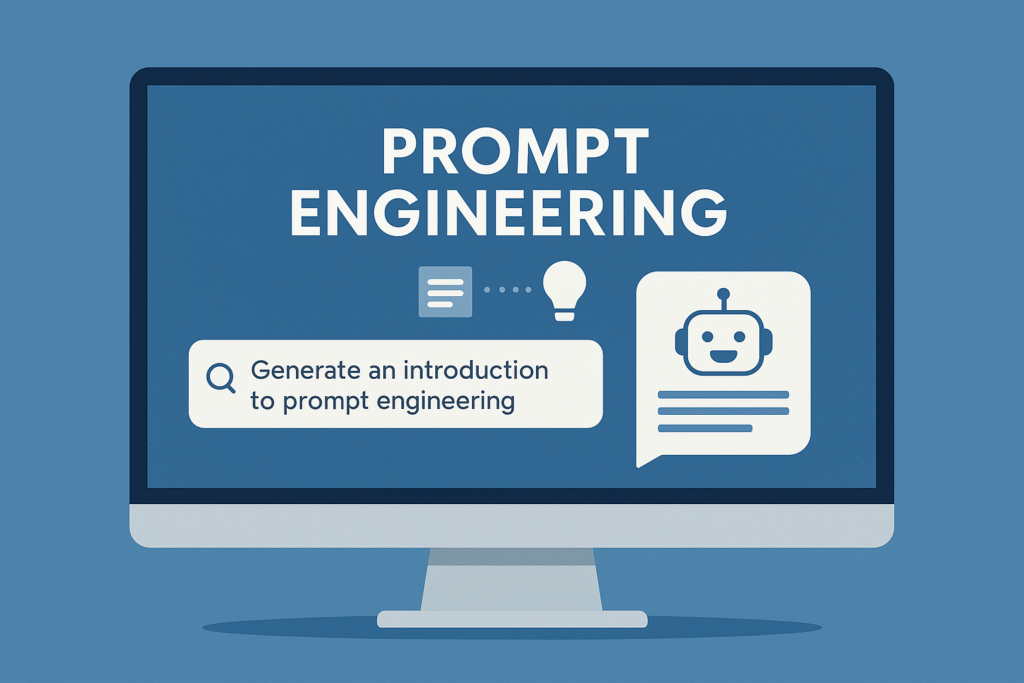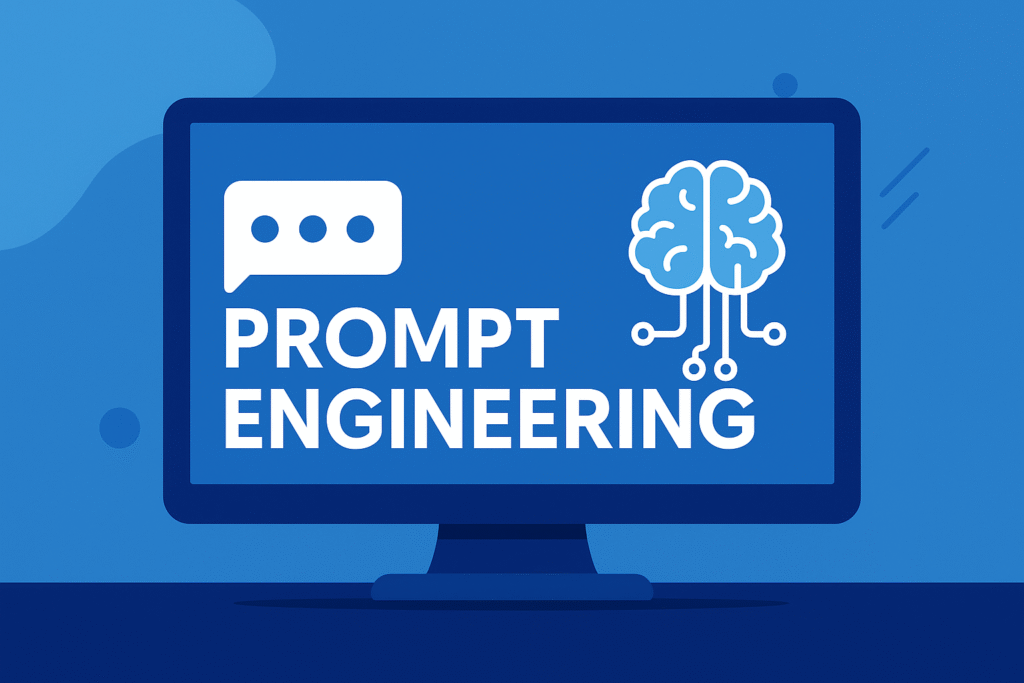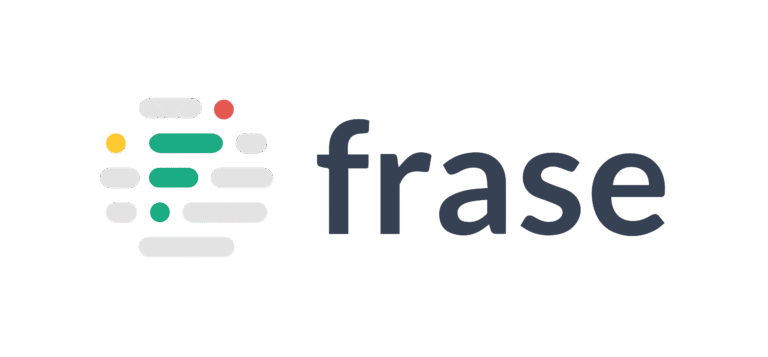AI writing tools have rapidly evolved into indispensable companions for today’s writers. Whether you’re crafting blog posts, planning email campaigns, or even working on novels and scripts, these tools offer the promise of increased speed and enhanced creativity. However, despite their many advantages, there’s one crucial thing they still can’t do independently: fully grasp your intent without clear direction. This is precisely where prompt engineering comes into play.
In fact, prompt engineering goes far beyond simply typing a request into a text box. Rather, it involves the careful art of designing clear, targeted instructions that directly influence how the AI generates its response. Just as a skilled writer selects their words with intention, a well-crafted prompt can significantly shape the outcome you receive.
Prompt Engineering: A New Writing Skill for the Digital Age
Today’s writers are learning a new kind of language—one that isn’t based on code, but rather on clarity and precision. Through prompt engineering, they gain the ability to guide an AI’s tone, structure, and creative direction. When done effectively, this skill not only saves valuable time but also reduces the need for constant rewrites, all while ensuring that your unique voice remains front and center.
Ultimately, prompt engineering is far more than a mere technical trick—it’s a creative superpower. It enables writers to harness the full capabilities of AI tools without sacrificing their originality or intent. Moreover, like any other writing skill, it’s something that can be learned, developed, and steadily refined with practice.
What Is Prompt Engineering?
Prompt engineering is the practice of designing effective inputs—or “prompts”—to guide AI tools in generating useful and accurate content. It’s how writers communicate with AI in a way that produces results aligned with their intentions.
While it may sound technical, prompt engineering is actually a form of creative direction. Instead of vague commands like “Write something about marketing,” a well-engineered prompt gives the AI clear instructions: what to write, how to write it, and who it’s for.
Why It Works
AI models like ChatGPT or Claude rely entirely on the prompt to understand what’s being asked. They don’t “know” your voice, your audience, or your goals—unless you spell them out. That’s why the same tool can produce wildly different outputs depending on how the prompt is framed.
Good prompt engineering turns AI from a guessing machine into a reliable writing assistant.
Not Just for Tech Experts
Prompt engineering isn’t limited to coders or developers. It’s quickly becoming a valuable skill in marketing, journalism, education, and especially creative writing. Anyone who works with language can benefit from learning how to guide AI more effectively.
For writers, this means clearer collaboration, faster content creation, and more control over tone and message—all without losing creative authority.

Why Prompt Engineering Matters to Writers
AI writing tools are only as good as the instructions they’re given. For writers, that means prompt engineering isn’t just a helpful add-on—it’s the key to unlocking AI’s full potential in your creative process.
More Control Over Tone, Structure, and Voice
One of the most common frustrations writers face when working with AI is getting output that feels off-brand, robotic, or disappointingly generic. Fortunately, this issue can be addressed with effective prompt engineering. By clearly specifying key elements—such as tone (e.g., “professional but friendly”), structure (e.g., “a three-paragraph introduction followed by bullet points”), and even the desired writing style—you gain far greater control over the results. Consequently, the AI is much more likely to generate content that aligns with your voice and intent. Instead of sounding like it came from a machine, the final output feels like something you genuinely created yourself.
Faster Content Creation With Fewer Rewrites
A well-engineered prompt leads to more accurate first drafts. Instead of endlessly tweaking AI output, writers who use clear, structured prompts spend less time editing—and more time moving projects forward.
Better Alignment With Creative Intent
AI doesn’t guess well. If you want a punchy headline or emotionally resonant dialogue, you need to guide it clearly. Prompt engineering gives you the tools to steer the AI toward your creative vision without having to settle for “close enough.”
Example: Vague vs. Precise Prompt
- Vague: “Write a social media post about mental health.”
- Precise: “Write a 150-character Instagram caption about mental health awareness in a compassionate and uplifting tone, ending with a call to action.”
The second prompt tells the AI exactly what to do—saving time and producing better results.
Core Principles of Effective Prompt Engineering
Great prompts don’t happen by accident. They’re intentional, refined, and built around a few key principles. Master these, and you’ll start getting AI-generated content that’s surprisingly sharp and on-point.
Be Specific
The more detail you provide, the better the AI can respond. Instead of saying “write an article,” say “write a 700-word listicle about 5 budget-friendly travel destinations for students.” Specificity removes ambiguity and helps guide structure, tone, and content.
Set Context
To get the most relevant results from AI, it’s not enough to simply issue a generic command. Instead, it’s important to provide clear context by explaining who the audience is, what the content is intended to achieve, and where it will be published. For example, you might say: “Write a professional LinkedIn post for freelance marketers about overcoming client burnout.” With this added information, the AI can more accurately tailor its tone, language, and format to suit the specific needs of the task. As a result, the final output is far more aligned with your goals. After all, the tone and structure of a LinkedIn post will naturally differ from content designed for platforms like TikTok, a long-form blog, or an email newsletter.
Define the Format or Output
Whether you want a bulleted list, a Q&A, a formal email, or a product description—say it. Structured formats help the AI organize its response more effectively and reduce the need for editing.
Use Examples or Style Guides
If you want a specific style, tone, or structure, include a sample or reference. You can say: “Write in the style of The New York Times,” or “Use this paragraph as a tone guide.” Examples anchor the AI’s output to your expectations.
Iterate and Refine
Great prompts often evolve. Don’t be afraid to tweak and test. Use follow-up prompts like “make this more concise” or “rewrite in a more humorous tone” to dial in the result.
🔄 Mini Case Study: A user asked: “Write an Instagram caption about coffee.” The result? Bland. Then they revised the prompt to: “Write a playful 100-character Instagram caption about espresso for Gen Z coffee lovers.” Result? Sharper, funnier, and more engaging.
Real-World Prompt Engineering Use Cases for Writers
Prompt engineering isn’t just an abstract concept—it’s a practical, hands-on skill that plays a vital role in nearly every type of writing task. Whether you’re drafting a blog post, outlining the plot of a novel, or crafting a concise tweet, the way you shape your prompt can significantly impact the quality of the AI’s output. By taking a thoughtful and intentional approach, writers across all disciplines can unlock greater creativity, streamline their workflow, and ultimately achieve more polished results. With that in mind, let’s explore how writers in different domains can apply prompt engineering effectively:
Using Prompt Engineering for Better Blog Post Creation
If you want a blog post with a compelling introduction, clear structure, and SEO-friendly subheadings, you need to ask for it. By specifying tone, length, and focus up front, you guide the AI toward producing stronger first drafts—reducing the time spent editing later.
Sample Prompt:
“Write a 100-word blog introduction in an enthusiastic tone for an article titled ‘10 Ways to Stay Focused While Working From Home.’ Make it engaging and relatable.”
Novel Planning or Dialogue Generation
When it comes to fiction, AI can be a helpful brainstorming partner. Whether you’re outlining scenes, mapping character arcs, or drafting dialogue, clear prompts can spark creativity and keep your narrative flowing.
Sample Prompt:
“Generate a tense dialogue between a detective and a suspect in a murder case. Keep it under 150 words and add emotional tension.”

Prompt Engineering Tips for Effective Social Media Copywriting
Social media writing requires precision. Because space is limited and tone matters, a well-crafted prompt can help you stand out in crowded feeds. In just a few words, you can direct the AI to deliver copy that’s on-brand and scroll-stopping.
Sample Prompt:
“Write a 280-character tweet promoting a blog post about sustainable fashion. Use a casual, witty tone and include a call to action.”
SEO Content Structuring
For content that ranks well, prompt engineering can speed up your workflow. By prompting the AI to include elements like keyword usage, meta descriptions, and FAQ sections, you save time and stay organized throughout the writing process.
Sample Prompt:
“Create an outline for a 1500-word blog post targeting the keyword ‘best AI writing tools 2025.’ Include H2s, H3s, and suggested FAQ questions at the end.”
Common Prompt Engineering Mistakes Writers Should Avoid
Even skilled writers can stumble when first working with AI. Here are a few common prompt engineering missteps to avoid:
❌ Being Too Vague
Prompts like “Write something about marketing” leave the AI guessing. Lack of detail usually results in generic, unhelpful content.
❌ Not Providing Context
If you don’t mention the audience, tone, or format, AI won’t know how to shape the content. Always tell it who it’s writing for and why.
❌ Misstep in Prompt Engineering: Expecting Human-Level Intuition from AI
AI isn’t a mind reader—it can’t pick up on emotional nuance, context, or backstory unless you deliberately include those details in your prompt. In other words, don’t assume the AI understands what “good” means to you; instead, take the time to define it clearly and specifically.
By being mindful of these common pitfalls, you’ll find that your AI-assisted writing becomes not only more accurate and efficient but also more closely aligned with your creative vision and objectives.
How to Practice and Improve Prompting Skills
Prompt engineering, like writing itself, improves with deliberate practice. Here’s how to sharpen your skills:
Reverse-Engineer Successful Prompt Engineering Examples
Study well-performing AI outputs. Ask yourself: What did the prompt include? Try breaking it down and adapting it for your own use.
Experiment With Variations
Test multiple versions of a prompt to see what gets the best result. Slight changes in tone, structure, or length can make a big difference.
Use Feedback Loops
Think of AI as a creative collaborator rather than just a tool. To get the best results, use iterative prompts such as “Make this funnier,” “Add a metaphor,” or “Simplify for a 10-year-old” to fine-tune the output step by step. By refining in stages, you guide the AI closer to your vision.
Over time, consistency improves through repetition. The more intentionally you craft your prompts, the more aligned—and effective—your results will become.

Conclusion – A Superpower for the Modern Writer
Prompt engineering is more than just a productivity hack—it serves as a creative bridge between your imagination and the machine’s capabilities. When you learn to guide AI with clarity and intent, you don’t lose your voice—instead, you amplify it. In this way, prompt engineering empowers you to express your ideas more effectively through the tools at your disposal.
That’s why it’s worth treating prompt engineering as a craft. With consistent practice, thoughtful refinement, and a personal touch, you can make it truly your own. Because in today’s era of AI-assisted writing, it’s not the tool alone that matters—it’s the precision and purpose behind your prompts that hold the real power.



